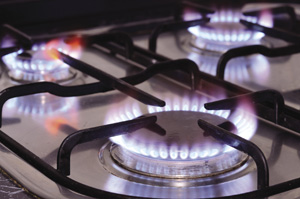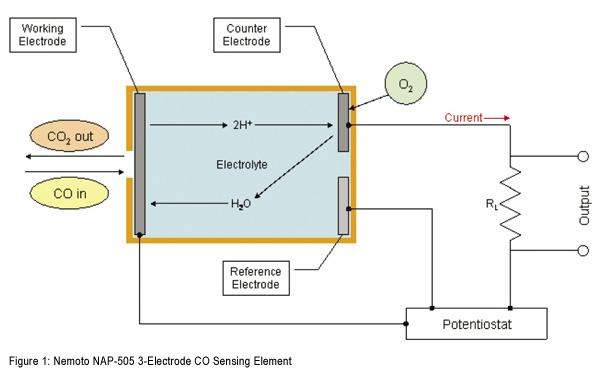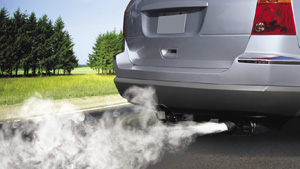Syed Taqi Hussain offers advice on the maintenance of electrochemical carbon monoxide sensors.
Warning about the dangers posed by sensors that are not calibrated and designed by an authorised professional company, Syed Taqi Hussain offers advice on the maintenance of electrochemical carbon monoxide sensors.

Introduction
The purpose of this article is to provide an instructional and informative document regarding gas sensing technology, primarily the electrochemical sensor, its principles of operation, maintenance and typical lifespan.
 What is a gas sensor?
What is a gas sensor?
A gas sensor measures the concentration of gas in its vicinity. The sensor interacts with a gas to measure its concentration. Each gas has a unique breakdown voltage, ie, the electric field at which it is ionised. The concentration of the gas can be determined by measuring the current discharge in the sensing device.
Electro-chemical sensing technology
Gas sensing devices are available in several technologies or principles of operation. Most common are the electronic, electrochemical and metal oxide semiconductors. The selection of a specific sensing technology is usually determined by their purpose – to sense a toxic gas or to sense a combustible gas. Here, I will deal specifically with electrochemical sensing technology used for the purpose of measuring the carbon monoxide (CO) gas.
Carbon monoxide is an odourless, tasteless, invisible gas primarily produced through a combustion process. It is highly lethal in humans, and even small concentrations of CO can cause headaches, nausea, vomiting, dizziness and fatigue. It is often referred to as “the silent killer”. Therefore, it is extremely important that CO sensing devices are installed in close proximity to all sources of combustion, like boiler rooms, industrial kitchens and enclosed car parks.
The typical electrochemical CO sensors consist of chemical reactants (electrolytes or gels) and two terminals – an anode and a cathode. The anode is responsible for an oxidisation process and the cathode is responsible for a reduction process. As a result, current is created by way of positive ions flowing to the cathode and the negative ions flowing to the anode. The output is directly proportional to the concentration of the carbon monoxide.
A more superior three terminal configuration consists of the anode or “working” electrode, the cathode or “counter” electrode, and a third, “reference” electrode.
The “reference” electrode maintains the healthy operation of the cell. It is surrounded by electrolyte, sees that no gas and no current is allowed to be drawn from it. Therefore, its electrochemical potential remains constant at a level referred to as “rest air potential”. It is used to regulate the potential of the working electrode, regardless of the current generated during operation. Some of the benefits achieved with a three-electrode sensor are extended range, improved linearity and other performance advancements. (See Figure 1)

As with all gas detectors, their operation and accuracy will deteriorate over time to an extent dependent on their installation and environment. The life expectancy of an electrochemical CO sensor will depend on several factors, such as the specific gas detected, the total amount of target (CO) gas the sensor is exposed to, temperature, humidity, and pressure. Typically, an electrochemical gas sensor should operate as designed for one-three years as the electrolyte within the sensor cell will eventually get used up. Regularly scheduled manufacturer’s recommended maintenance (calibration) procedures should extend the lifespan of the sensor if properly followed.
 It is recommended that CO detectors be recalibrated at a minimum annual schedule and preferably every six months in order to ensure accurate and proper operation, given the potential detrimental or fatal consequences which could occur without the required monitoring or indication of harmful CO concentrations present.
It is recommended that CO detectors be recalibrated at a minimum annual schedule and preferably every six months in order to ensure accurate and proper operation, given the potential detrimental or fatal consequences which could occur without the required monitoring or indication of harmful CO concentrations present.
The duration of the recalibration process will depend on the amount of target gas the sensor is exposed to, or the extent of deterioration of the sensor, whereby one sensor can have its calibration re-established quicker than another, depending on the installation location. In doing so, I advise that a typical CO detector should have an operational lifespan of five-seven years.
The writer is the Director – Sales & Services (HVAC) at Eco Evergreen. He can be contacted at taqi@ ecoevergreenuae. com
Copyright © 2006-2025 - CPI Industry. All rights reserved.